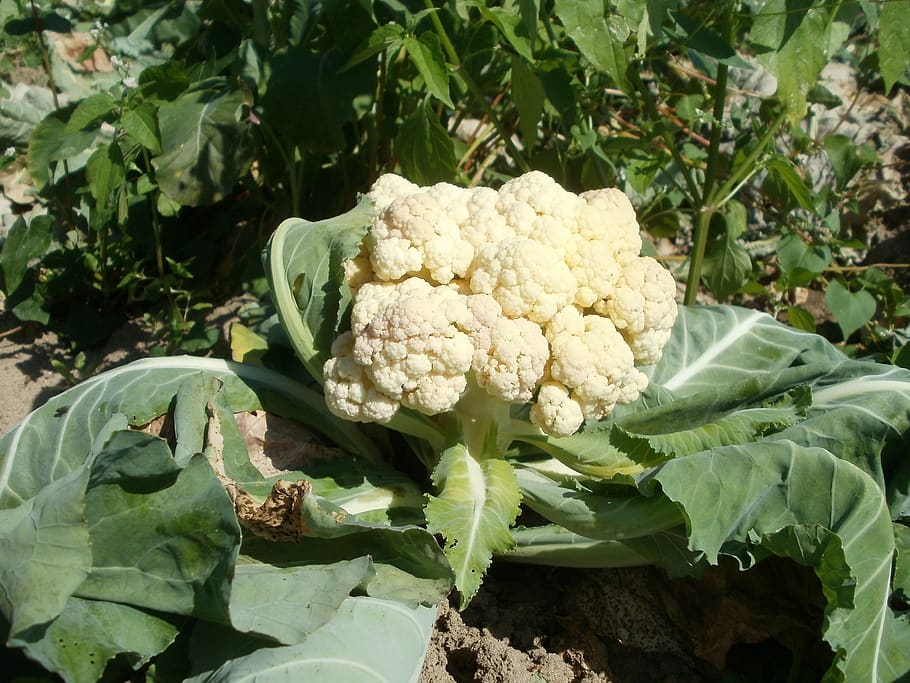Can Cauliflower Survive Frost?
The Crucial Crop: A Brief Overview of Cauliflower
Cauliflower is a versatile and nutritious vegetable crop that is widely cultivated for its edible florets. It belongs to the Brassicaceae family, which includes other popular vegetables such as broccoli, cabbage, and kale. Cauliflower is believed to have originated from the Mediterranean region and has been cultivated for more than 2000 years.
Today, cauliflower is one of the most important vegetable crops globally, with China being the top producer. India comes in second followed by Spain, Italy and the United States.
It can be grown in different climatic conditions but thrives best in cool temperatures ranging between 60°F-65°F with adequate moisture levels. Within a year, farmers can produce two harvests of cauliflower making it an essential crop economically.
Cauliflower Vulnerability: The Threat of Frost Damage
Despite its importance as a cash crop worldwide, cauliflower remains vulnerable to various environmental factors that threaten its yield potential. One of these factors is frost damage. Frost damage occurs when ice crystals form on plant tissues leading to cell ruptures and tissue destruction.
This condition causes plants to turn black or brown while also impairing their ability to function efficiently. Cauliflower plants are particularly vulnerable to frost damage because they grow low to the ground where colder air temperatures settle at night.
As a result, farmers must take precautions early on in the cultivation process if they hope to reap high-quality yields come harvest time. In this article, we will examine whether cauliflower can indeed survive frost and explore some measures farmers can take to minimize frost damage to their crops
What is Frost?
Frost is a weather condition that can have a significant impact on crops, including cauliflower. Frost occurs when the temperature drops below freezing, causing ice crystals to form on the surface of plants.
This can damage or kill the plant’s cells and tissues, leading to reduced yields or complete crop loss. The effects of frost depend on several factors, including the temperature, duration of exposure, and timing.
Definition of Frost and How it Affects Plants
Frost is a phenomenon where water vapor in the air freezes onto surfaces such as plants. When this happens, ice crystals form within or outside plant cells and cause damage to the cell walls.
The extent of damage depends on various factors such as plant species’ tolerance level towards frost and how long they are exposed to frost conditions. Cauliflower is a cold-weather crop that requires cool temperatures for development but cannot tolerate freezing temperatures for an extended period.
When exposed to frost conditions below 32°F (0°C), cauliflower leaves tend to develop black spots due to cell rupture caused by ice crystal formation inside its tissues. Additionally, prolonged exposure to frost conditions leads to reduced growth rate or in extreme cases complete crop loss.
Types of Frost and Their Impact on Cauliflower
There are two types of frost: radiation and advection frost. Radiation frost occurs during clear nights when heat radiates into space from objects like soil surfaces causing them to cool down more quickly than surrounding air temperatures leading to condensation at ground level which can freeze onto plants’ surfaces. On the other hand, advection frosts form during windy nights when cold air masses move into an area replacing warmer air masses making them colder than surrounding objects such as plants.
Radiation frosts pose more danger to cauliflower than advection frosts since they may last longer due to low wind speeds allowing for prolonged exposure durations that may freeze plant tissues. Cauliflower plants that have been exposed to radiation frost tend to develop black spots on their surfaces due to cell rupture caused by ice crystals, while those exposed to advection frosts typically have more frost damage on their tips and leaves.
Can Cauliflower Survive Frost?

Cauliflower is a cool-season crop that prefers temperatures between 60 and 65 degrees Fahrenheit. When exposed to frost, the plant becomes vulnerable to damage and can even die if the temperature drops too low or if the duration of exposure is too long. However, cauliflower has some tolerance to frost and may survive if certain conditions are met.
Factors that determine the survival rate of cauliflower during frost
Several factors determine how well cauliflower can withstand frost. One such factor is the maturity level of the plant. Young plants that have not yet reached maturity are more susceptible to damage from frost than older plants.
Additionally, the health of the plant also plays a role in determining its ability to survive cold temperatures. The variety of cauliflower can also impact its ability to survive frost.
Some varieties are bred specifically for colder climates and may be more tolerant of frost than others. The environmental conditions in which the plant is grown, such as soil type and moisture levels, can also have an impact on how well it survives during a cold snap.
The role of temperature, duration, and timing in determining the fate of cauliflower during frost
Temperature plays a critical role in determining whether or not cauliflower will survive a frost event. Generally speaking, temperatures below 28 degrees Fahrenheit for more than four hours will cause significant damage to most varieties of cauliflower. However, some varieties are more tolerant and may be able to withstand lower temperatures or longer durations without significant damage.
Timing is another important factor when it comes to protecting cauliflower from frost damage. Early-morning frosts tend to be more damaging than later frosts because they occur when temperatures are typically at their lowest point.
Farmers can use weather forecasts and other tools to predict when frosts are likely to occur so they can take preventative measures before any damage occurs. While cauliflower has some tolerance to frost, it is still vulnerable to damage and death if exposed to certain conditions.
Farmers can take steps to protect their crops by selecting the right varieties, monitoring environmental conditions, and implementing preventative measures when frost is likely. By doing so, they can help ensure that their cauliflower crops survive the winter months.
How to Protect Cauliflower from Frost Damage
Frost can cause irreversible damage to cauliflower plants, leading to stunted growth, reduced yield, and even the death of the plant. Fortunately, there are several techniques you can use to protect your cauliflower crop from frost damage.
Covering with Blankets or Tarps
One effective way of protecting cauliflower from frost is by covering it with blankets or tarps. This technique helps to trap heat around the plant and prevent the formation of ice crystals on its surface.
To use this method, drape a blanket or tarp over the plant before sunset and remove it in the morning once temperatures have risen above freezing point. Be sure to secure the edges of the cover with stakes or rocks so that it doesn’t get blown away by strong winds.
Using Water to Create a Protective Layer Around the Plant
Another way of protecting cauliflower from frost is by using water to create a protective layer around the plant. This technique works by releasing heat as water freezes, which helps to keep the plant warm during cold weather.
To use this method, spray water on your cauliflower plants in the late afternoon or early evening when temperatures are still above freezing point. Be sure not to soak the plants as excess water can cause them harm.
Planting in Sheltered Areas or Using Windbreaks
Planting in sheltered areas or using windbreaks is another effective way of protecting cauliflower from frost damage. Windbreaks create a barrier that reduces wind speed and protects plants from extreme weather conditions such as frost and strong winds. You can create windbreaks using natural barriers such as trees and shrubs or by building fences made of wood, plastic mesh, or other materials.
While it’s impossible to completely eliminate frost damage on your cauliflower crop during cold weather conditions like winter months, following these techniques can go a long way in reducing the severity of the damage. By covering your plants with blankets or tarps, creating protective layers around the plant with water, and planting in sheltered areas or using windbreaks, you can protect your cauliflower crop and ensure that it thrives even during cold weather conditions.
Conclusion
Cauliflower is a valuable crop that is unfortunately vulnerable to frost damage. However, with careful planning and strategic measures, farmers can ensure that their cauliflower crops survive even the most severe frosts. We have discussed the various factors that determine the survival rate of cauliflower during frost, including temperature, duration, and timing.
Furthermore, we have explored techniques for protecting cauliflower from frost damage. These include covering the plants with blankets or tarps, using water to create a protective layer around the plant, planting in sheltered areas, or using windbreaks.
Farmers must take these precautions seriously if they want to maximize their yields and minimize their losses. Overall, while it may be challenging to grow cauliflower in regions prone to frost damage, it is not impossible.
By being proactive and taking steps to protect their crops before an anticipated drop in temperature occurs, farmers can prevent significant losses and potentially reap significant rewards. While there are risks inherent in any type of agriculture production, careful planning and attention to detail can go a long way toward ensuring success.

